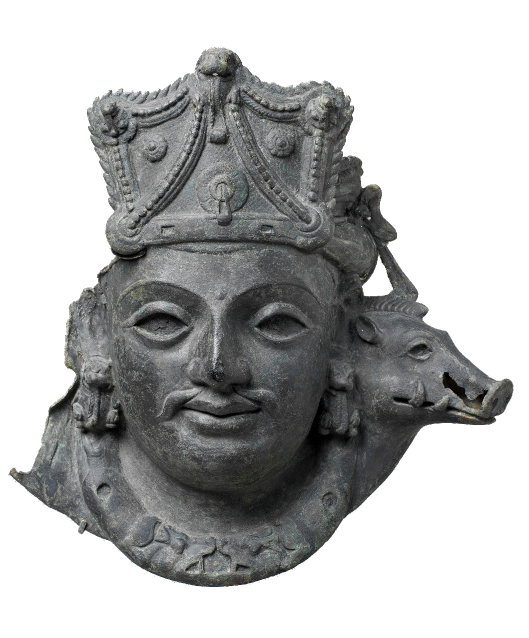PERSPECTIVES
How Trade, Textiles, and Ambitious Commissions Made Modern Ahmedabad
Ahmedabad has always been a city in transition — evolving, morphing, growing. Never was this more evident than in the 1970s that saw a dramatic evolution in its skyline.
Formerly dominated by low-lying structures that employed traditional building methods native to the region, Ahmedabad’s built landscape began including structures by several pre-eminent modern architects. These included Le Corbusier, BV Doshi, Louis Kahn, Charles Correa, Gira Sarabhai, and others.
How did Ahmedabad come to experience this influx of Modernist forms? The answer lies with the movement of trade and textiles from and to the city, and the larger trend of modernisation in India, post-Independence.
The textile boom of the late-nineteenth and early-twentieth century saw multiple textile mills spring up in the city. The demand for labour also led to mass migrations from across the country to Ahmedabad. Simultaneously, a wealthy business class arose — mainly newly-minted industrialists and mill owners. In keeping with the shifting demographic, the local architecture underwent a period of significant modernisation.
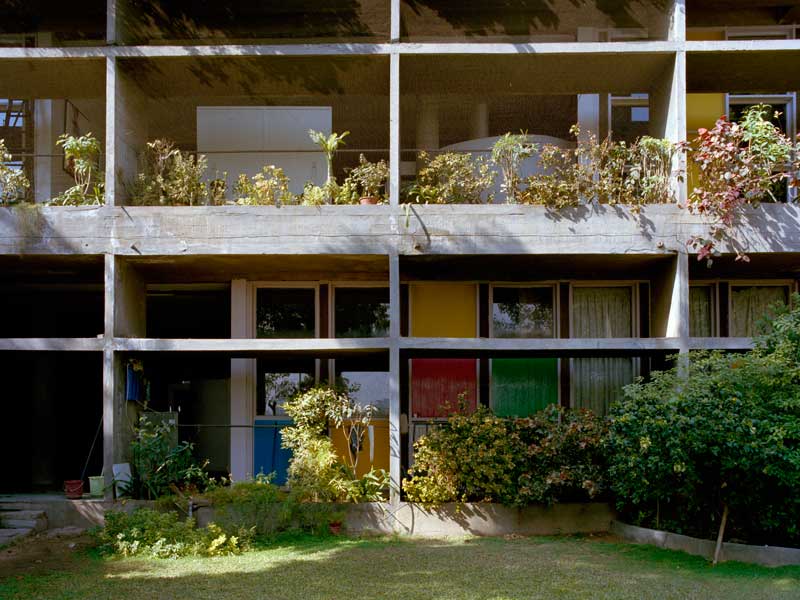
The city’s nouveau riche, eager to portray Ahmedabad as a modern city, commissioned newer constructions that mixed global architectural trends and traditional designs.
Most of the invited artists hailed from countries and institutions that were at the forefront of the post-war Modernist movement. Notables like Le Corbusier and Louis Kahn soon began designing structures within the city.
The Ahmedabad Mill Owners’ Association building, constructed in 1954 and designed by Le Corbusier, is an early and significant example. Later, Le Corbusier also designed the Sanskar Kendra in the city. Following this, Vikram Sarabhai and Kasturbhai Lalbhai invited Louis Kahn to design the campus of IIM Ahmedabad, on which work began in 1964.
Meanwhile, there were the Indian architects, such as Gira Sarabhai, BV Doshi, Charles Correa, and Achyut Kanvinde. Inspired by the works of Le Corbusier and Kahn as well as the designs of Buckminster Fuller, Walter Gropius, and Flank Lloyd Wright, they designed multiple structures in the city but also incorporated local building methods and designs.
This intermingling of styles has often been seen as a purely aesthetic rather than political choice. But there is no denying that these design choices arose partly as a reaction to the wave of nationalism sweeping the newly-independent country eager to establish a distinct identity.
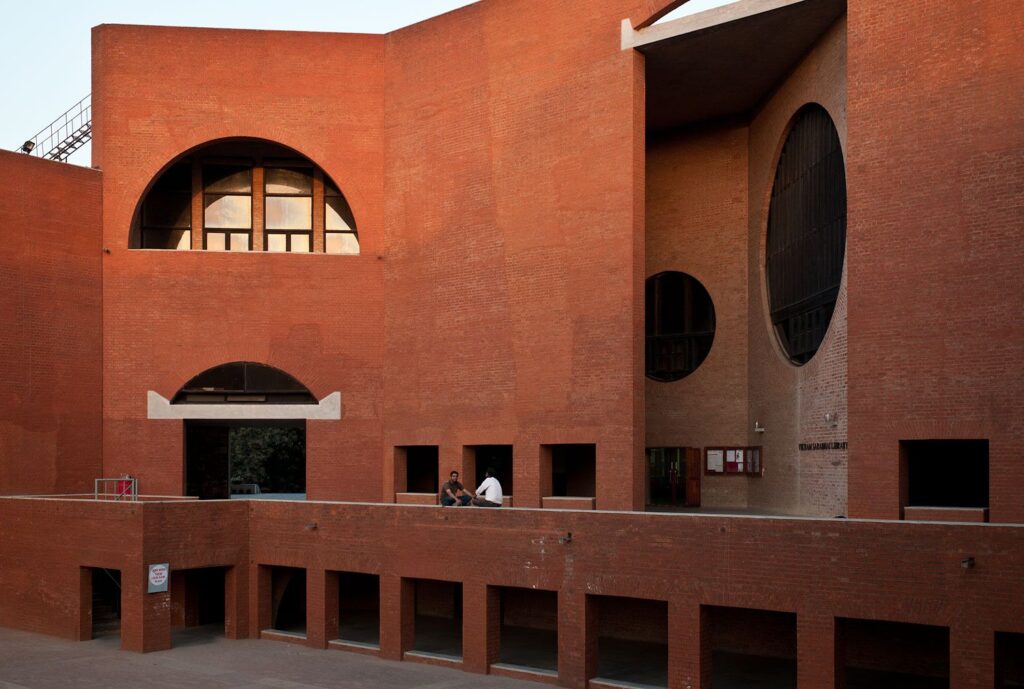
The trend to ‘Indianise’ can partly be attributed to the limited availability of modern materials such as steel. This led to a preference for locally-sourced building materials, such as brick and wood.
The incorporation of both the traditional and the modern mirrored the context within which architectural modernity played out across the region. Evoking the Western architectural aesthetic in South Asian cities often meant adapting these imposing, large-scale modernist structures to better fit the cityscape by adopting traditional design elements.
This form of syncretism resulted in structures such as the Calico Dome, designed by Gautam and Gira Sarabhai and inspired by Buckminster Fuller’s geodesic domes; the ATIRA campus, designed by Achyut Kanvinde and inspired by the work of Walter Gropius; Amdavad Ni Gufa, Premabhai Hall, and Tagore Hall, designed by BV Doshi; and the Gandhi Smarak Sangrahalaya designed by Charles Correa.
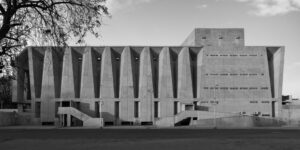
The modernising influence was evident in the residential structures constructed during this period too. In the private spaces of the wealthy, an attempt was made to reconcile the changing social structures of the South Asian family in response to Western ideas about the ideal family unit.
Houses built during the period prioritised the nuclear family over the joint, extended family, directly contrasting with the earlier communal designs of the pols in the city. Pols, a type of micro-neighborhood unique to urban centres in Gujarat, are characterised by closely packed, multi-storey homes, narrow lanes, and central courtyards. Such housing clusters are still found within Ahmedabad’s walled city.
The pol homes, housing generations of one family in each, were replaced by single-storeyed, low-lying buildings.
The central communal chowk (courtyard) was replaced with gardens at the front and back, resulting in outward-facing houses rather than the earlier inward-facing ones. The heavily ornamented facades of the pols, influenced by Hindu and Jain architecture, were also replaced with more formalised, modernist design elements, which relied heavily on sweeping arches and uninterrupted lines.
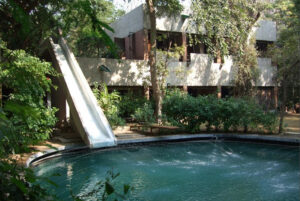
Examples of these include the Manorama Sarabhai House and Shodhan House, designed by Le Corbusier, and the Ramkrishna House, designed by Charles Correa.
As much as modernism shaped Ahmedabad, the city was instrumental in shaping the trajectory of modernism across South Asia as well. The textile and industrial boom in the city made it a playground for architectural innovation and the intermingling of diverse visual vocabularies.
Today, Ahmedabad straddles architectural polarities, from the traditional constructions of the Old City’s pols to the modernist language adopted by the architects of the late-twentieth century — a testimony to the impact of trade, commerce and an upwardly mobile mercantile class on the aesthetics of a place.
Ashwathy Gopinath is an Associate Editor with Observer Research Foundation. She was previously a research editor with MAP Academy.
